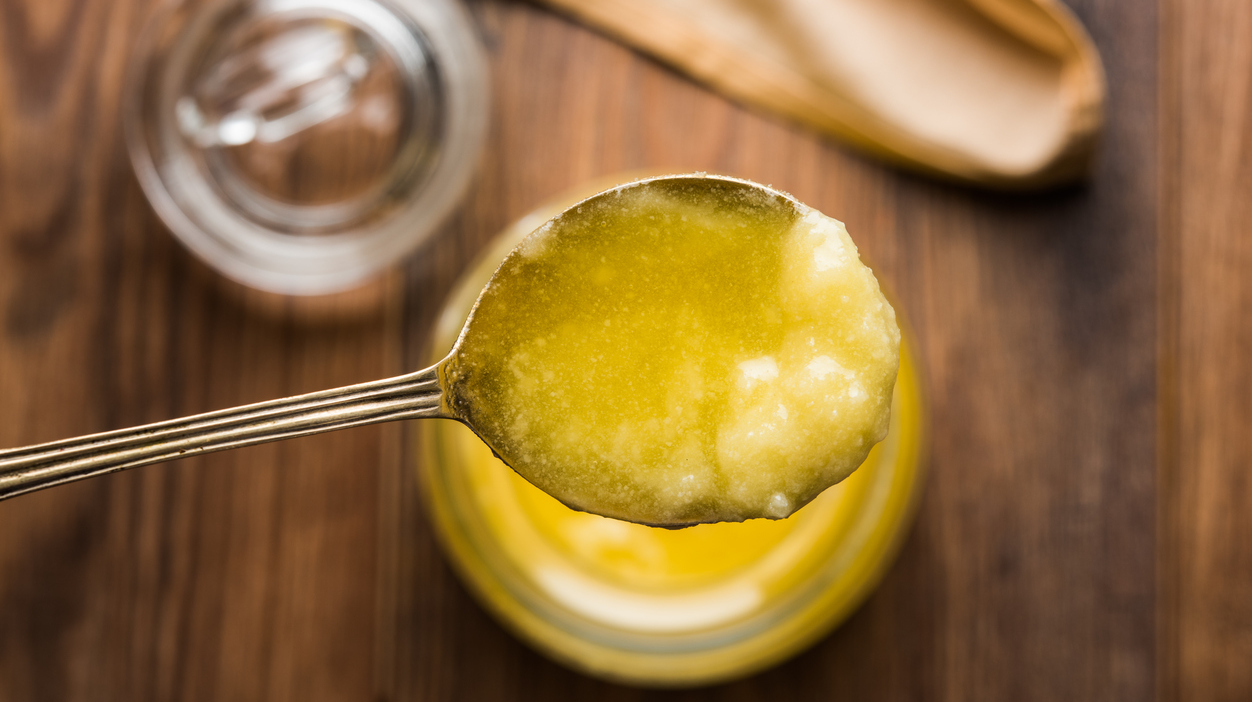What If You Fried Chicken In Chicken Fat?
I have tasted chicken fried in beef tallow. I have tasted chicken fried in duck fat. I have tasted chicken fried in leaf lard. I have tasted chicken fried in non-animal fats. Never have I tasted chicken fried in chicken fat.
Light bulb. Head. Ping!
The idea was inspired by the Ivan Ramen cookbook, which features several recipes—chicken katsu cutlet and chicken teriyaki—that uses schmaltz as a frying oil. Ivan Orkin's rationale is you're leaving free flavor on the table by only using a neutral-tasting oil.
I know what chicken fat tastes like. I've had enough fried chicken skin to know that it's delicious. But as a flavored oil? I had no idea what flavors it would impart.

Schmaltz is difficult to source (it's not like there's excess fat you can trim from a chicken). Fortunately, there's a Jewish deli near Chicago coincidentally named Schmaltz's Deli, which lucky for me, sells plastic tubs of schmaltz. I'd check with your local butcher, who may be able to sell you sheets of chicken skin that you can render down yourself.
Armed with two cups of chicken fat, I embarked on my experiment. I deboned two chicken thighs (kept the skin on, because come on), seasoned with salt and pepper, and dredged the pieces in all-purpose flour. In one cast iron skillet, I heated canola oil to 340 degrees Fahrenheit. In another skillet, the two cups of schmaltz heated at the same temperature (chicken fat has a smoke point of 375 degrees, which is higher than lard but lower than beef tallow).
I fried both pieces for about eight minutes, flipping once. The skillet with the chicken fat roiled a beautiful golden sheen. This was what it looked like when I took out the pieces. The chicken thigh on the left was cooked in canola oil, the one on the right in chicken fat:

Both look pretty much the same. Both cooked the chicken to a similar texture—greaseless and crackly on the outside, exceptionally moist on the inside.
Here's the thing with the chicken fat fried chicken: You absolutely can taste the difference. Mostly it amplified the savory chicken qualities with the exterior coating. It's as if someone pressed Ctrl-B on chicken skin. Imagine a whiff of steaming chicken noodle soup; there's something salty and bouillon cube about that head. This was the flavor imparted; it tasted like fried chicken multiplied by 1.5.
That being said, I intentionally used a light seasoning so as to not overwhelm. I later marinated a separate batch of chicken with Thai seasonings, which I fried in chicken fat, and it was hard to discern what the schmaltz added. I mean, it was still delicious, but with bolder flavorings come diminishing return.
Overall verdict? Delicious. But because schmaltz is so hard to procure, you might be better off using it in another application.
I have an idea. If you're a fan of warm bacon vinaigrette, substitute the hot bacon drippings with warmed chicken schmaltz. Served over spinach salad? Dang.
